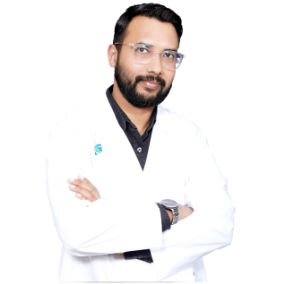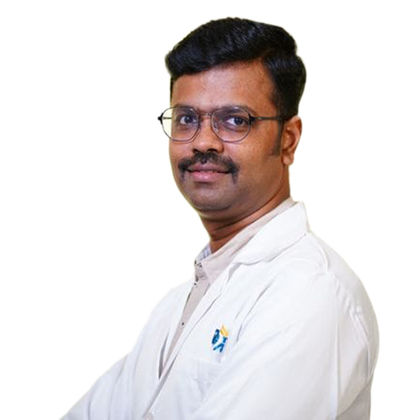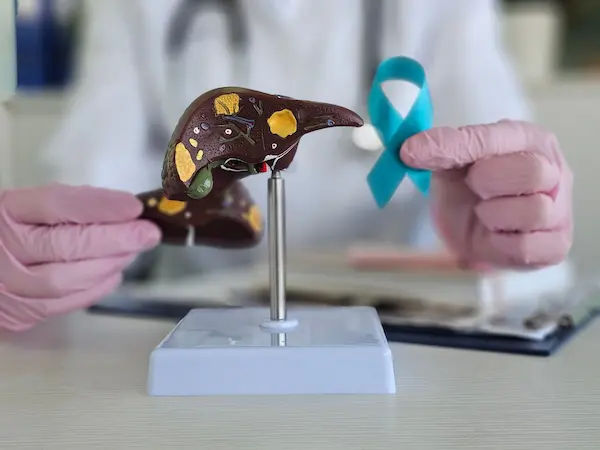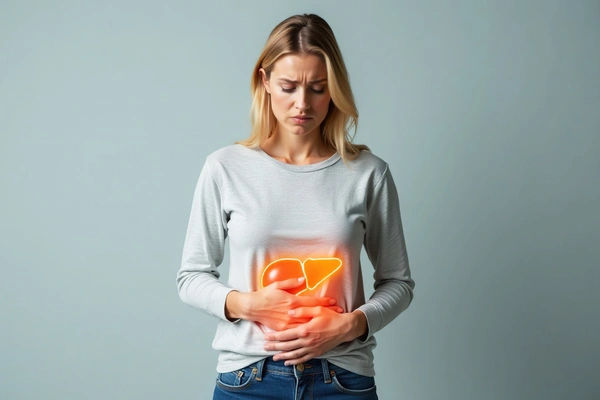The Diabetes and Liver Disease Connection: An Essential Guide
Understand the link between diabetes and liver disease, including NAFLD and NASH. Learn symptoms, diagnostic tests, and actionable steps to protect your liver health.

Written by Dr. Siri Nallapu
Reviewed by Dr. Rohinipriyanka Pondugula MBBS
Last updated on 26th Sep, 2025

Introduction
Living with diabetes involves managing more than just blood sugar levels; it requires a holistic view of your health. One of the most critical, yet often overlooked, connections is between diabetes and liver disease. Think of your liver as your body's primary processing plant—it helps regulate fuel storage and manages toxins. When you have diabetes, this vital organ can become overwhelmed, leading to a condition known as Non-Alcoholic Fatty Liver Disease (NAFLD). Shockingly, NAFLD affects up to 70% of people with type 2 diabetes. The concerning part? This liver disease often develops silently, without obvious symptoms, until significant damage has occurred.
This guide will demystify the complex relationship between these two conditions. We will explore how diabetes impacts your liver, the signs to watch for, the essential tests for diagnosis, and the empowering steps you can take to protect your liver health and prevent serious complications. Understanding the link between diabetes and liver health is your first step toward a healthier future.
Understanding the Link: Why Diabetes Affects Your Liver
The relationship between diabetes and liver disease is a two-way street. Diabetes can be a primary cause of liver problems, and conversely, a poorly functioning liver can worsen diabetes control. At the heart of this connection lies insulin resistance.
The Role of Insulin Resistance
Insulin acts like a key, unlocking your cells to allow glucose from your blood to enter and be used for energy. In type 2 diabetes, cells become resistant to insulin. The pancreas compensates by producing more insulin, which signals the liver to increase fat production and reduces its ability to export fat. This leads to fat buildup in the liver—the first stage of liver disease.
From Fatty Liver to Inflammation: The Disease Spectrum
The accumulation of fat in liver cells, known as steatosis, is the starting point. For many, this simple fatty liver may not cause immediate harm. However, for about 20–30% of individuals, the excess fat triggers inflammation and liver cell damage, called Non-Alcoholic Steatohepatitis (NASH). Over time, chronic inflammation can lead to scarring (fibrosis), progressing to cirrhosis and, in severe cases, liver failure or cancer. Early intervention is crucial to prevent this progression.
Consult Top Doctors for Personalised Advice
The Most Common Culprit: Non-Alcoholic Fatty Liver Disease (NAFLD)
When discussing liver disease in diabetes, NAFLD is almost always the central concern. It is a spectrum of conditions characterised by excess fat in the liver in people who drink little to no alcohol.
What is NAFLD?
NAFLD is defined as fat in more than 5% of liver cells. It is strongly associated with metabolic risk factors such as obesity, high blood pressure, high cholesterol, and type 2 diabetes. Often asymptomatic, it is frequently discovered during routine blood tests or imaging for other reasons.
When It Gets Serious: Progression to NASH and Cirrhosis
Simple NAFLD is largely reversible with lifestyle changes. The danger lies in its progression to NASH, where inflammation injures liver cells. Continuous injury causes fibrosis. Advanced fibrosis and cirrhosis represent permanent scarring, impairing liver function. Effective diabetes management is crucial in halting this progression.
Are You at Risk? Recognising the Signs and Symptoms
Awareness of risk factors can guide proactive health management.
Silent Symptoms: Why Early Detection is Tricky
Early-stage NAFLD and NASH often show few symptoms. Possible signs include:
- Persistent fatigue
- Discomfort or mild pain in the upper right abdomen
- Unexplained weight loss in later stages
- More obvious symptoms, such as jaundice, leg swelling, or abdominal swelling (ascites), indicate advanced disease.
Key Risk Factors Beyond Diabetes
Other factors increasing liver disease risk include:
- Obesity, particularly abdominal fat
- High cholesterol or triglycerides
- Metabolic syndrome (high blood pressure, high blood sugar, excess waist fat, abnormal cholesterol)
- Rapid weight loss
Family history of liver disease
People with these risk factors should discuss liver health screening with their doctor. Online consultations with Apollo24|7 can provide an initial assessment.
Getting a Diagnosis: Tests Your Doctor Might Recommend
Because symptoms are often absent, specific tests are essential for diagnosis.
Blood Tests: Liver Function Tests (LFTs) and More
Initial screening usually involves blood tests:
- ALT (Alanine Aminotransferase) and AST (Aspartate Aminotransferase): Indicate liver inflammation or damage
- GGT (Gamma-Glutamyl Transferase) and Alkaline Phosphatase: May also be elevated
- HbA1c: Assesses long-term blood sugar control, which impacts liver health
- Apollo24|7 provides convenient home collection for tests like HbA1c.
Imaging Scans: Ultrasound, FibroScan, and MRI
Your doctor may also recommend imaging tests:
- Ultrasound: Detects fat in the liver
- FibroScan®: Measures liver stiffness to estimate scarring without a biopsy
- MRI: Provides detailed imaging and fat quantification
The Gold Standard: Liver Biopsy
A liver biopsy is used when diagnosis is unclear or advanced fibrosis is suspected. Tissue is examined under a microscope to diagnose NASH and stage fibrosis. This procedure is typically performed by a hepatologist.
Get Your Health Assessment Done
Taking Control: Your Action Plan to Manage Liver Health
Lifestyle modification is central to managing NAFLD in diabetes.
1. Dietary Changes for a Healthier Liver
Focus on reducing liver fat and improving insulin sensitivity.
Foods to Embrace
- High-fibre vegetables: broccoli, leafy greens, Brussels sprouts
- Lean proteins: fish (especially omega-3-rich), chicken, tofu, legumes
- Healthy fats: avocado, nuts, seeds, olive oil
- Complex carbohydrates: whole grains like oats and quinoa
Foods to Avoid
- Sugary beverages: soda, fruit juice, sweetened teas
- Refined carbohydrates: white bread, pasta, pastries, white rice
- Saturated and trans fats: fried foods, red meat, processed snacks
- High-fructose corn syrup: common in processed foods
2. The Power of Physical Activity
Exercise lowers blood sugar and reduces liver fat. Aim for:
- Aerobic exercise: 150 minutes per week (walking, cycling, swimming)
- Resistance training: 2–3 days per week
Even a 7–10% reduction in body weight can improve liver enzyme levels and reduce inflammation.
3. Medication Management and New Horizons
No medications are specifically approved for NAFLD/NASH, but managing underlying conditions helps:
- Diabetes medications: Pioglitazone, GLP-1 receptor agonists (e.g., semaglutide) may reduce liver fat.
- Vitamin E: May reduce inflammation in non-diabetic adults with NASH, under supervision.
- Work with your doctor to optimise treatment. New therapies are in development.
Conclusion
Managing diabetes and liver health may seem challenging, but knowledge empowers action. By adopting a liver-friendly lifestyle focused on a balanced diet and regular exercise, you can prevent or even reverse early-stage liver disease. Progression to severe conditions like cirrhosis is not inevitable. Small, consistent changes, regular monitoring, and open communication with your healthcare provider can protect your liver and overall health for years to come.
Consult Top Hepatologists
Get Your Health Assessment Done
₹240(₹600)60% off
₹240(₹600)60% off
₹310(₹775)60% off
₹230(₹575)60% off
₹800(₹2000)60% off
₹619(₹1547)60% off
Consult Top Hepatologists

Dr. Srinivasa Reddy
Hepatologist
12 Years • MBBS, MD (General Medicine), DM (Hepatology),ASGE
Hyderabad
Myra Liver & Gastro Care, Hyderabad

Dr. E Prabhakar Sastry
General Physician/ Internal Medicine Specialist
40 Years • MD(Internal Medicine)
Manikonda Jagir
Apollo Clinic, Manikonda, Manikonda Jagir
(150+ Patients)

Dr. Pukhraj Singh Jeji
Gastroenterology/gi Medicine Specialist
13 Years • MBBS, MD ( Internal Medicine ), DM ( Gastroenterology ), Consultant - Gastroenterology
Bhubaneswar
Apollo Hospitals Old Sainik School Road, Bhubaneswar

Dr. Aakash Garg
Gastroenterology/gi Medicine Specialist
12 Years • MBBS, DNB (Medicine), DrNB (Gastroentrology).
Bilaspur
Apollo Hospitals Seepat Road, Bilaspur
(150+ Patients)

Dr. Kumaragurubaran. S
Hepatologist
0 Years • MBBS.,MD.,FPIC.,DM.,
Tiruchirappalli
Apollo Speciality Hospitals Old Palpannai, Tiruchirappalli
(25+ Patients)
Consult Top Doctors for Personalised Advice

Dr. Srinivasa Reddy
Hepatologist
12 Years • MBBS, MD (General Medicine), DM (Hepatology),ASGE
Hyderabad
Myra Liver & Gastro Care, Hyderabad

Dr. E Prabhakar Sastry
General Physician/ Internal Medicine Specialist
40 Years • MD(Internal Medicine)
Manikonda Jagir
Apollo Clinic, Manikonda, Manikonda Jagir
(150+ Patients)

Dr. Pukhraj Singh Jeji
Gastroenterology/gi Medicine Specialist
13 Years • MBBS, MD ( Internal Medicine ), DM ( Gastroenterology ), Consultant - Gastroenterology
Bhubaneswar
Apollo Hospitals Old Sainik School Road, Bhubaneswar

Dr. Aakash Garg
Gastroenterology/gi Medicine Specialist
12 Years • MBBS, DNB (Medicine), DrNB (Gastroentrology).
Bilaspur
Apollo Hospitals Seepat Road, Bilaspur
(150+ Patients)

Dr. Kumaragurubaran. S
Hepatologist
0 Years • MBBS.,MD.,FPIC.,DM.,
Tiruchirappalli
Apollo Speciality Hospitals Old Palpannai, Tiruchirappalli
(25+ Patients)
More articles from Liver disease
Frequently Asked Questions
Can you reverse fatty liver disease caused by diabetes?
Yes, in its early stages (simple NAFLD), fatty liver disease is often reversible through sustained weight loss, improved diet, and better blood sugar control.
What are the first signs of liver damage in diabetics?
There are often no clear early signs. Mild fatigue or upper-right abdominal discomfort may occur. Regular liver function tests are essential for early detection.
What is the best drink for fatty liver?
Water is best. Black coffee without sugar may also protect the liver. Sugary drinks like soda and fruit juice should be avoided.
How is NAFLD different from other types of liver disease?
NAFLD is not caused by alcohol, viral infection, or autoimmune disorders. It is linked to metabolic issues such as insulin resistance.
What level of ALT is concerning for a diabetic?
Consistently elevated ALT above the normal range (around 30–40 IU/L for men, 19–25 IU/L for women) may indicate liver inflammation. Your doctor will interpret results in context.







